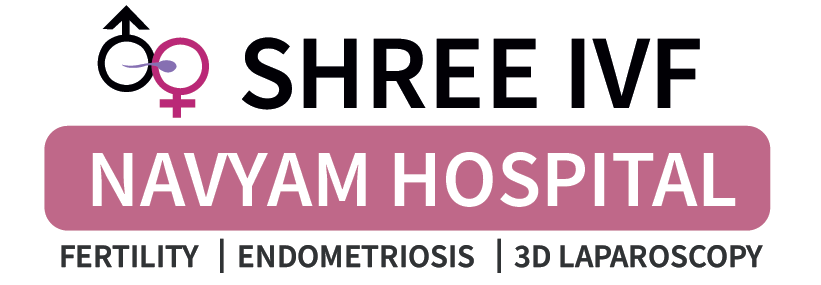
Ovarian endometriosis, commonly called a “chocolate cyst,” is one of the most prevalent forms of endometriosis.
This condition can develop independently or alongside deep endometriosis and may also be linked to extra-pelvic endometrial lesions.
Ovarian endometriosis is a major contributor to infertility, impacting around 20-40% of individuals diagnosed with the condition.
Symptoms & Diagnosis of Ovarian Endometriosis
✅ What is Ovarian Endometriosis?
Ovarian endometriosis occurs when endometrial-like tissue grows on or inside the ovaries, leading to the formation of endometriomas, also known as chocolate cysts. These cysts contain old, dark blood and can cause pain, infertility, and ovarian damage.
Ovarian endometriosis is one of the most common forms of endometriosis and significantly impacts a woman’s reproductive health.
🔎 Symptoms of Ovarian Endometriosis
The symptoms of ovarian endometriosis vary in severity and often overlap with other gynecological conditions. Common symptoms include:
✅ 1. Pelvic Pain:
- Chronic pelvic pain is the most common symptom.
- Pain is often worse during menstruation (dysmenorrhea).
- May radiate to the lower back and legs.
✅ 2. Painful Periods (Dysmenorrhea):
- Severe cramping and abdominal pain before and during menstruation.
- Pain intensity may increase over time.
✅ 3. Pain During Intercourse (Dyspareunia):
- Painful or uncomfortable sexual intercourse.
- Occurs due to the inflammation and scarring around the ovaries.
✅ 4. Heavy or Irregular Menstrual Bleeding:
- Heavy or prolonged periods (menorrhagia).
- Irregular or unpredictable menstrual cycles.
- Spotting between periods.
✅ 5. Infertility:
- Ovarian endometriosis is a major cause of infertility.
- Cysts can affect egg quality and ovulation.
- Adhesions can block the fallopian tubes, preventing fertilization.
✅ 6. Fatigue and Nausea:
- Chronic fatigue is common due to inflammation and hormonal imbalances.
- Nausea and bloating may occur before or during menstruation.
✅ 7. Gastrointestinal Symptoms:
- Constipation, diarrhea, or bloating, especially during periods.
- Pain during bowel movements if endometriosis affects the nearby intestines.
✅ 8. Painful Urination (Dysuria):
- If the bladder is involved, urination may become painful.
- More common in advanced ovarian endometriosis.
✅ 9. Lower Back and Leg Pain:
- In cases of severe endometriosis, pain may extend to the lower back and legs.
- Due to the inflammation and pressure on surrounding nerves.
✅ 10. Abdominal Swelling or Mass:
- In some cases, large ovarian endometriomas may cause abdominal distension.
- Can be mistaken for ovarian tumors.
🔍 Diagnosis of Ovarian Endometriosis
Diagnosing ovarian endometriosis requires a combination of clinical evaluation, imaging, and sometimes surgery.
✅ 1. Medical History and Symptom Review:
- The doctor reviews the symptoms, menstrual history, and pain patterns.
- History of chronic pelvic pain, painful periods, or infertility raises suspicion.
✅ 2. Pelvic Examination:
- During a pelvic exam, the doctor may detect:
- Tenderness in the ovaries.
- Presence of masses or cysts.
- Signs of adhesions or inflammation.
✅ 3. Transvaginal Ultrasound (TVUS):
- First-line imaging technique for ovarian endometriosis.
- Detects endometriomas (chocolate cysts).
- Cysts appear as homogeneous, ground-glass-like structures.
- Assesses the size and location of ovarian cysts.
✅ 4. Magnetic Resonance Imaging (MRI):
- Provides detailed images of the ovaries and surrounding structures.
- Effective in detecting deep ovarian endometriosis and cyst characteristics.
- Used to differentiate between endometriomas and ovarian cancer.
✅ 5. Laparoscopy:
- Gold standard for diagnosing ovarian endometriosis.
- Minimally invasive surgery performed under general anesthesia.
- A camera is inserted through small incisions to visualize the ovaries.
- Allows for simultaneous biopsy and removal of endometriotic cysts.
✅ 6. CA-125 Blood Test:
- Measures the levels of CA-125, a protein associated with endometriosis.
- Elevated levels may indicate advanced ovarian endometriosis, but this test is not definitive.
- CA-125 levels can also be high in other conditions, such as ovarian cancer.
✅ 7. Sonovaginography (SVG):
- Advanced ultrasound technique used for detailed imaging of endometriosis lesions.
- Helps detect deep ovarian involvement.
✅ 8. Fertility Assessment:
- In women facing infertility, ovarian endometriosis is often diagnosed during fertility evaluations.
- Ovarian reserve testing (AMH levels) may be performed.
- Hysterosalpingography (HSG) may be used to assess fallopian tube function.
✅ 9. Biopsy and Histopathology:
- Tissue samples from laparoscopy or surgery are examined under a microscope.
- Confirms the presence of endometrial glands and stroma.
💡 Key Takeaway
Ovarian endometriosis can cause pelvic pain, heavy periods, and infertility. Diagnosing it requires a combination of imaging, blood tests, and laparoscopy. Early detection and treatment are essential to preserve fertility, reduce pain, and improve quality of life. 🌷


